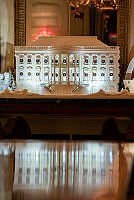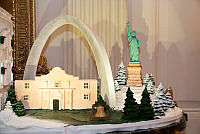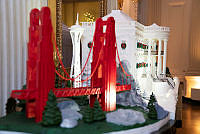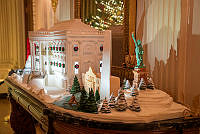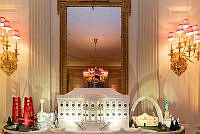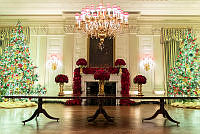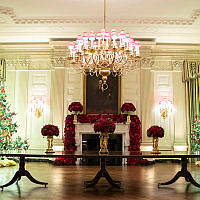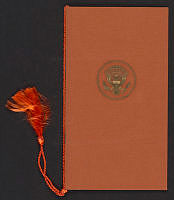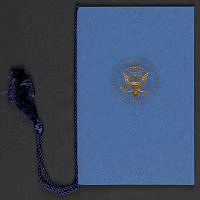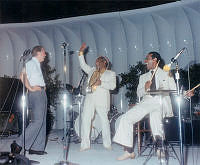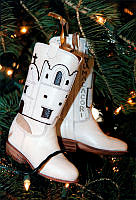Rubenstein Center Scholarship
Emancipation Day in Washington, D.C.
April 16, 1862
This article is part of the Slavery in the President’s Neighborhood initiative. Explore the Timeline
Congress passed the Compensated Emancipation Act to end slavery in the District of Columbia and President Abraham Lincoln signed the bill into law on April 16, 1862. Three years later, after the Civil War ended and after the 1865 ratification of the Thirteenth Amendment to the Constitution officially abolishing slavery nationwide, African Americans in the District began to celebrate April 16 as a holiday. The day included speeches and, most importantly, a parade, which weaved past the White House. Click here to learn more about the household of President Abraham Lincoln.
Organized by the black elite of the city, the parades began in 1866 as a demonstration of African-American pride and political strength. School children often took a day off in order to watch all the black civic organizations and clubs march in the parade. Militia groups and Civil War veterans marched in full regalia with slogans on banners that called for liberty and equality for all citizens. 1 Rain or shine the emancipation parades went on, all throughout the city in stark contrast to the black codes of the antebellum era, which restricted the movement of African Americans throughout the city. Where slave coffles had once passed, free African Americans now marched openly rejoicing their new status as citizens.
In close proximity to the White House, where many of the domestic staff had been enslaved, witnessing scores of free African Americans in elaborate civilian or military dress was an evocative image. Presidential approval helped make the parades a success and acknowledged African Americans had the right to assemble in Lafayette Square as free people. Presidents Ulysses S. Grant and Andrew Johnson particularly enjoyed the tributes to Lincoln and the Republican Party as emancipators.2 Presidents usually reviewed at least one of the parades during their administration. Click here to learn more about the enslaved household of President Ulysses Grant. Click here to learn more about the enslaved household of Andrew Johnson.
Historian Craig A. Schiffert asserts these processions ended in 1901 because of class divisions within the African-American community and the specter of segregation in the Jim Crow era. Previous celebrations included a spirited protest against Plessey v. Ferguson, the famous Supreme Court decision in 1896 that legitimized a move toward segregation practices. By the end of the nineteenth century, the parades had become unwieldy "gaining a significant lower class constituency."3 Occasionally, fights and scuffles, arrests for thievery, public drunkenness and general disorderly conduct marred the events. However, this was not out of the ordinary for public parades during the late nineteenth century or even today.
The African-American bourgeoisie worried the parades demonstrated the "dregs" rather than the progression of the race. To block the tide of segregation and bigotry, the burgeoning black middle class believed they needed a mantle of respectability for protection. The death knell for this holiday arrived when prominent African Americans withdrew their support.4 Ending in 1901, the parades highlighted a bright legacy in the history of the black community in Washington. The parades represented the pride, dignity, strength and the progress of African Americans.
The city revived the parades in 2002 as a result of the research, lobbying and leadership of Ms. Loretta Carter-Hanes. She started her quest to bring back the parades in the early 1980s. She scoured the archives for any and all information about Emancipation Day and the parades.5 Starting in 1991, Hanes organized events that would commit the day to public memory.6 Eventually, Emancipation Day was made an official public holiday in the District of Columbia in 2005.
Each year, District residents again celebrate the end of slavery in Washington, D.C.
Historic newspaper articles describing presidential review of the parade
- "The colored people celebrated emancipation day to day by a procession. President Grant appeared at the window of the White House, but did not speak. Several rows occurred during the procession, but were confined entirely to blacks." Richmond Whig, April 20, 1869
- "The parades as they passed by the White House were reviewed by the President [Benjamin Harrison] and all the members of the cabinet." Topeka Weekly Capital, April 18, 1889
- "A delegation of colored men called on the President [Grover Cleveland] this afternoon and asked him to review the Emancipation Day Parade tomorrow. Notwithstanding it being a cabinet meeting the President commented and will review the parade from the North Portico of the White House. the colored schoolchildren of the District will also participate in the parade." The Sun, April 16, 1895

A government document showing claims paid for emancipated enslaved individuals to their former owners.
Kiplinger Library, Historical Society of Washington, D.C.


